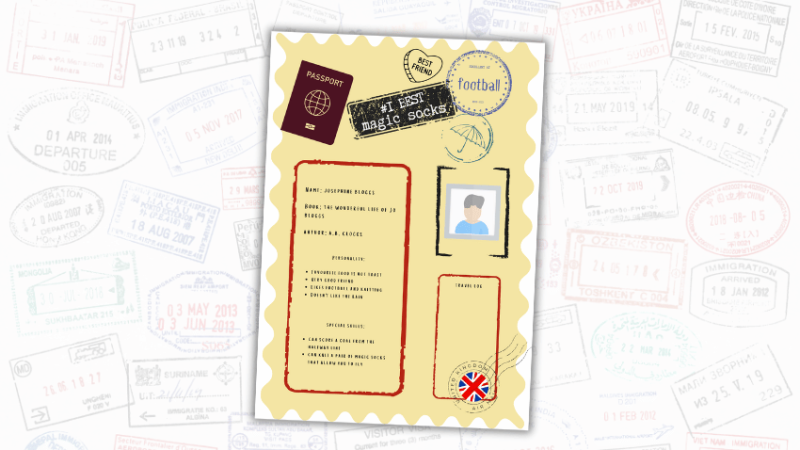Non-fiction books – How to use factual books in the classroom

Try these classroom ideas and learn about how factual books can help children navigate our world…

- by Teachwire
- Classroom expertise and free resources for teachers

Growing up is a tough old business, isn’t it? I mean it’s an exciting time but it’s full of challenges. But non-fiction books can help.
As they move up through primary school, children will find themselves having to get to grips with all kinds of tricky topics, from understanding their own feelings and navigating relationships to wider issues such as climate change, politics, and fake news.
It’s a LOT. I know. But well-researched high-quality factual books are a great resource.
They’re a powerful form of storytelling using words and pictures, and they can keep things interesting. They can break down big ideas and spark thoughtful conversations as well as inspiring all kinds of creative work in the classroom.
Curiosity
Children are naturally curious. They want to learn more about the world around them and how things work. And when they discover something that WOWs them, they hold onto it. They share it. They’re hungry for more.
That’s why, when I was asked to be Writer-in-Residence at BookTrust, the UK’s largest children’s reading charity, I knew exactly what my theme would be: using factual books to fascinate young readers.
As an author, I’ve seen how these books can engage children, making reading accessible and irresistible. In so many instances, factual books can create readers.
And there is a solid base of research produced by BookTrust showing that reading for pleasure can transform a child’s life chances. It counters disadvantages caused by inequalities and nurtures wellbeing, self-esteem, creativity and empathy. We know that fictional stories can do this but so can true stories.
Non-fiction books for kids
In this golden age of children’s non-fiction books, you’ll find a factual book on every topic under the sun.
There’s something for every reader and on any theme you might want to explore in the classroom.
They’re available in every format too, from picture books, poetry, and comics to handbooks for older readers.
And if you can’t find the perfect book just yet, you can bet there’s a writer out there furiously working away at one right this moment.
It’s what we do as authors and illustrators. We respond to children’s curiosity. We answer their wildest questions about the world. We take big ideas and turn them into books.
Critical thinking KS2
At a time where fake news can whizz across the world faster than you can say “Bob’s your uncle”, children need resources they can trust. Enter factual books.
They take an absolute age to put together because of the enormous amount of painstaking research and fact-checking behind them.
For example, my book with Jason Lyon, Amazing Asia: An Encyclopaedia of an Epic Continent, out in October 2024, took over a year and a half of intensive research, writing and illustrating with a board of experts involved at every stage.
We’ve dealt with some difficult themes such as colonialism, war, and conflict, but in sensitive way. And we’ve taken great care to balance these issues with plenty of beautiful, celebratory cultural representation from across the continent.
Children’s bookmakers have a huge responsibility towards our readers. So we work our socks off to ensure that our books are exciting and interesting, but also accurate, age-appropriate, and (increasingly) as inclusive as possible.
And we have a rule – we don’t tell children what to think. We set out the facts and offer them to the reader who can then turn them over in their minds, consider them, pull them apart, and form their own opinions. That’s where the magic is.
Here, we’re entirely on the same page as educators. We’re all about encouraging critical thinking, a skill needed now more than ever in this age of disinformation and spin and one that sets children up for life.
Teaching fun facts
As well as engaging children and nurturing curiosity and critical thinking, factual books are also an invitation to the reader.
A summons to reflect, to think, to build their own understanding of the world – yes, of course. All of these things. But also to do something. To discuss big ideas. To ask questions and wonder at things. To create things.
You can employ factual books as a starting point for exploring all kinds of themes in the classroom. You might use them to inspire art or creative writing across the curriculum.
Or you might want to encourage pupils to dive into their own research, questioning what they see, hear, and read; finding the best sources, and breaking down issues, events, and ideas to share with others. Factual books are a conversation-starter; a launchpad.
Where you take things is entirely up to you. I’ve visited enough schools to know that you know your pupils better than anyone.
Children’s non-fiction books
The best factual books will shift something inside a reader. After reading books about big issues, children may begin to see things differently.
Perhaps they will begin to consider the world from new perspectives. Maybe something they weren’t sure about before suddenly seems so much clearer. Or they begin to have a better understanding of themselves and the people around them.
Maybe they feel moved to bring about some kind of change within themselves or in the wider world. Or perhaps the shift is more subtle, but just as powerful.
Like a child who doesn’t consider themselves a reader finding themselves drawn to a book and then another and another. My love of reading and my love of learning began with factual books. So I get it. I really do. And that shift? It unlocks so much.
Factual books can be incredible and much-needed levellers in an intensely unequal world. Through these books, children can learn more about themselves and others.
They can travel through time and across the planet, meet heroes of all kinds, and they can be and do and wrap their brains around anything and everything. That’s a big promise, I know. A hard sell. But I believe it with all my heart. I’ve seen it. And I know many of you have too.
Growing up is hard. The world is big and there’s so much to learn. But these children have you. And a whole wealth of knowledge at their fingertips.
How to use non-fiction books
- Include non-fiction books in the choice available for free reading. Choice is key. BookTrust has expert-curated booklists to help, and I’ll be sharing some of my favourites on their website during my residency too.
- Let students buddy up and choose factual books to explore and discuss together.
- Create a ‘Fascinating Facts’ board where students can share interesting facts that they come across in factual books or news magazines.
- Use factual books to support children when learning about big and important themes: from fake news, war and climate change to nurturing empathy and navigating relationships. They can be a platform for thoughtful, sensitive discussions.
- Use factual books to inspire art, from drawings and paintings to graphic novel extracts about a role model, historical moment or movement. Or to prompt pieces of creative writing such as poems and diary entries.
- Explore the concept of activism through books and use it as a launchpad for letter-writing based on big issues that affect children.
- Follow BookTrust’s social media channels for more content from me around factual books throughout my residency (until the end of August 2024). BookTrust’s website also offers content curated for primary schools, including resources and ideas for encouraging reading for pleasure at home and in the classroom.
Rashmi Sirdeshpande is BookTrust’s writer-in-residence. She an award-winning children’s author who writes a happy mix of fiction and non-fiction. Find Rashmi on X (formerly Twitter) at @rashmiwriting and hear more from BookTrust at @Booktrust or at booktrust.org.uk.
More ideas for using non-fiction books
Go beyond books
It is important to remember that a broad range of texts can be used to inspire non-fiction writing. Atlases, leaflets, gadget handbooks, product packaging and catalogues – many children are exposed to these regularly, but they may not consider them actual ‘texts’.
For reluctant readers, however, the study of a manual for a games console or even a cereal box can be more accessible and engaging than a more traditional non-fiction book.
You might, for instance, challenge the class to produce an alternative manual for a device they own, or for one they invent themselves – taking the form of an explanation or instructional writing.
Or you could set a persuasive writing exercise in which children produce appealing packaging for a new cereal or food product, which in turn opens up cross-curricular links to a healthy eating study in science.
Use fiction to inspire non-fiction
The use of fictional texts as sources of inspiration for the writing of non-fiction genres should not be ignored. Recount writing in the role of characters is something that can be done for any fiction study.
This could be in the form of a diary, letter or newspaper report relating to events experienced by characters within a text.
Children could also be asked to research and subsequently write a non-chronological report based on an historical event that features within a fictional text.
For example, a reading of Goodnight Mr Tom, Carrie’s War or When Hitler Stole Pink Rabbit could lead to a piece about the Second World War.
Try new recipes
Suggest titles for new culinary creations that incorporate people’s names, eg Betty Spaghetti, Roast Peter, Graham Goulash, Tim on Toast.
Develop an understanding of word play and word association by asking children to write the accompanying recipe (instructional text) for these new meals. Encourage them to make their recipes humorous and perhaps revolting in nature.
Write a Wonderland guidebook
Following a reading of a fictional text, focus the children’s attention on the setting of the story eg Alice’s Wonderland, Narnia or even Mr Men and Little Miss Land.
After a discussion about the different aspects of this fantasy land, challenge children to write a non-chronological report in the form of a guidebook.
Possible subheadings could focus on aspects such as weather, food, objects, landscape, inhabitants, and attractions.
Tackle key issues
Engage children in an oral debate relating to a troubling issue or concern. This can be within their locality or the wider context of the country / world (eg poverty, homelessness, prejudice, crime).
Following the debate, ask children to reflect on what’s been said and then write a discussion text which relates their thoughts and perspectives on the issue.
To take this a step further you could actually send pupils’ work to well-known figures who are passionate about the issue – a local politician, the prime minister or the king, for example. Children may even receive a reply!
Emma Hughes-Evans is assistant headteacher at a primary school in the West Midlands and author of Stimulating Non-Fiction Writing! Inspiring Children Aged 7-11, published by Routledge. Find more resources for Non Fiction November.







